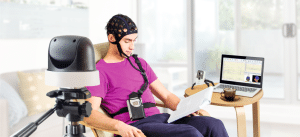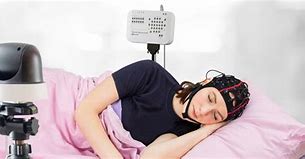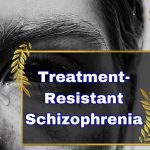Video EEG Test: A Useful Tool for Diagnosing Seizures
Seizures are episodes of abnormal electrical activity in the brain that can cause changes in behavior, movement, sensation, or consciousness. Seizures can have many different causes and types, and sometimes it can be hard to diagnose them accurately. That’s why doctors may use a special test called video EEG (electroencephalogram) monitoring to help them find out the cause and nature of seizures.
What is video EEG monitoring?

Video EEG monitoring is a test that records both the brain waves and the video of a person during a seizure. EEG stands for electroencephalogram, which is a test that measures the electrical activity of the brain using small electrodes attached to the scalp. Video EEG monitoring combines EEG with a video camera that captures what the person is doing or experiencing during a seizure.
The purpose of video EEG monitoring is to see what is happening in the brain and in the body at the same time when a seizure occurs. This can help doctors to:
- Confirm if the episodes are actually seizures or something else
- Identify the type and frequency of seizures
- Locate the area of the brain where seizures start
- Evaluate the effect of seizure medications
- Determine if surgery or other treatments are suitable
How is video EEG monitoring done?

Video EEG monitoring is usually done in a hospital setting where seizures can be safely observed and treated. The test may last from a few hours to several days, depending on how often the person has seizures and why the test is done.
Before the test, the person’s hair is washed and dried. Then, small electrodes are attached to the scalp with a special glue or paste. The electrodes are connected to wires that lead to an EEG machine that records the brain waves. A video camera is also set up in the room to record the person’s movements and behavior.
During the test, the person stays in a comfortable bed or chair and can watch TV, read, or do other activities. The person may also be asked to do some tasks that could trigger a seizure, such as looking at flashing lights or breathing deeply. The person’s vital signs, such as blood pressure and heart rate, are also monitored.
The person may be allowed to have visitors, but they should not touch or talk to the person during a seizure. The person should also avoid caffeine, alcohol, and smoking during the test.
The test may be stopped if:
- The person has enough seizures to make a diagnosis
- The person has a severe or prolonged seizure that requires treatment
- The person develops an infection or skin irritation from the electrodes
- The person requests to stop the test
After the test, the electrodes are removed and the scalp is cleaned. The person may feel tired or have a headache after the test. The person should not drive or operate machinery until they feel fully recovered.
What are the benefits and risks of video EEG monitoring?
Video EEG monitoring is a useful tool for diagnosing seizures because it can provide more information than a standard EEG or a video alone. Video EEG monitoring can help doctors to:
- Distinguish between epileptic seizures and non-epileptic events, such as fainting, panic attacks, or psychogenic seizures
- Classify seizures into different categories, such as focal (partial) or generalized seizures
- Identify specific syndromes or conditions that cause seizures, such as temporal lobe epilepsy or Lennox-Gastaut syndrome
- Plan appropriate treatments based on the type and location of seizures
Video EEG monitoring is generally safe and painless, but it may have some risks or limitations, such as:
- Infection or skin irritation from the electrodes
- Discomfort from staying in bed or having wires attached to the head
- Anxiety or boredom from being in a hospital room for a long time
- False-negative results if no seizures occur during the test
- False positive results if other factors affect the brain waves, such as sleep deprivation, stress, or medications
Conclusion
Video EEG monitoring is a valuable test for diagnosing seizures and finding out their cause and nature. It involves recording both the brain waves and the video of a person during a seizure. It can help doctors to confirm if the episodes are actually seizures, identify their type and location, and plan suitable treatments. Video EEG monitoring is usually done in a hospital setting for several hours or days. It is generally safe and painless, but it may have some risks or limitations.
If you have seizures or suspect that you have them, you should talk to your doctor about whether video EEG monitoring is right for you. It may help you get a better understanding of your condition and improve your quality of life.
References
(1) What Is a Video EEG Test (Electroencephalogram)? – MedicineNet.
(2) Video EEG Test | Epilepsy Foundation.
(3) Video-EEG Monitoring Test – Medindia.
FAQs
What is video EEG monitoring?
Video EEG monitoring is a test that records both the brain waves and the video of a person during a seizure. It can help doctors to diagnose and treat seizures.
Why is video EEG monitoring done?
Video EEG monitoring is done to confirm if the episodes are actually seizures, identify their type and location, and plan suitable treatments.
How long does video EEG monitoring take?
Video EEG monitoring may take from a few hours to several days, depending on how often the person has seizures and why the test is done.
Is video EEG monitoring safe and painless?
Video EEG monitoring is generally safe and painless, but it may have some risks or limitations, such as infection, discomfort, anxiety, or false results.
How can I prepare for video EEG monitoring?
You should wash and dry your hair before the test. You should also avoid caffeine, alcohol, and smoking during the test. You may need to stop or adjust your seizure medications before the test. You should follow your doctor’s instructions carefully.
Latest Posts
- Tips for Getting Better Sleep with Anxiety in 2024

- Split Renal Test: The Best Way to Diagnose Dangerous Kidney Problems in 2024

- Revolutionizing Treatment-Resistant Schizophrenia Solutions: Unleashing Hope in 2024

- Demystifying Obsessive-Compulsive Disorder in 2024: Understanding OCD from the Inside Out

- Unmasking the Mind: Can the DAP Test Truly Decode Your Mind in 2023?

